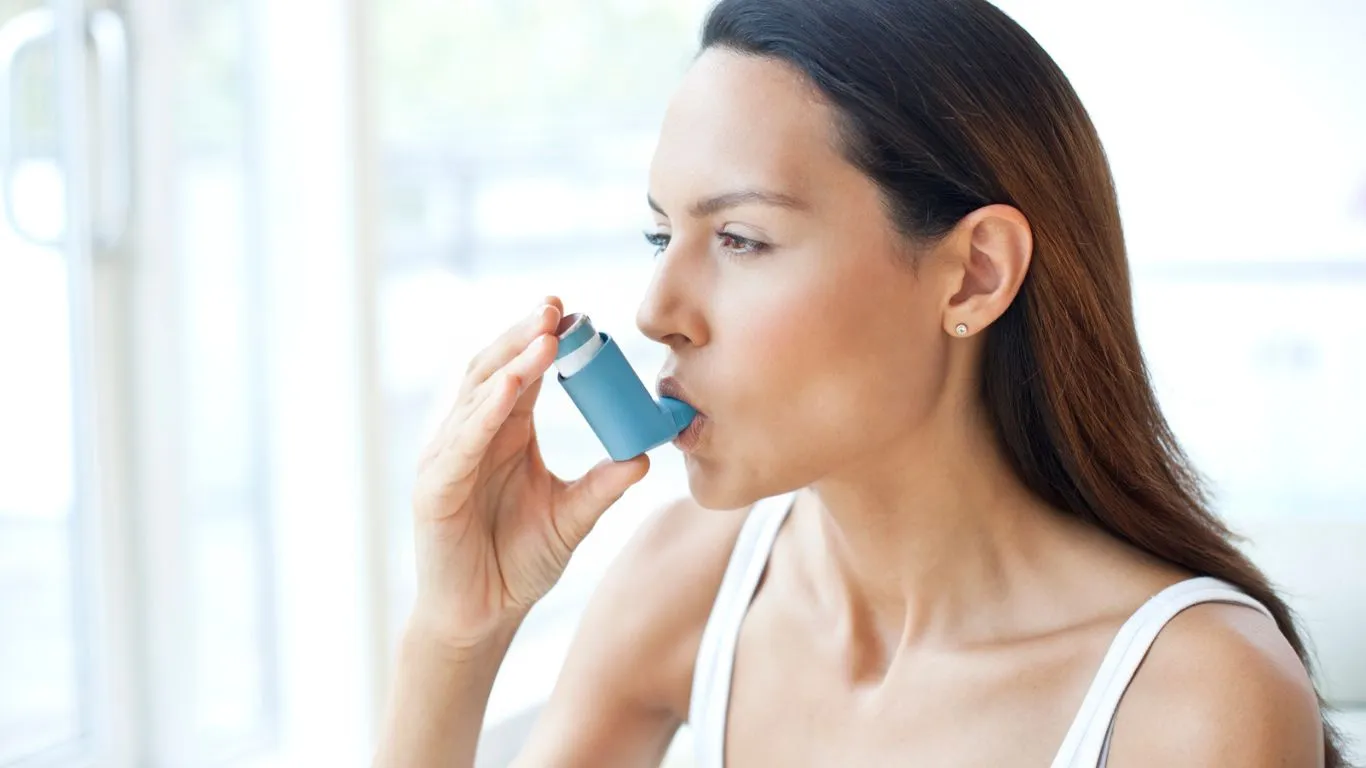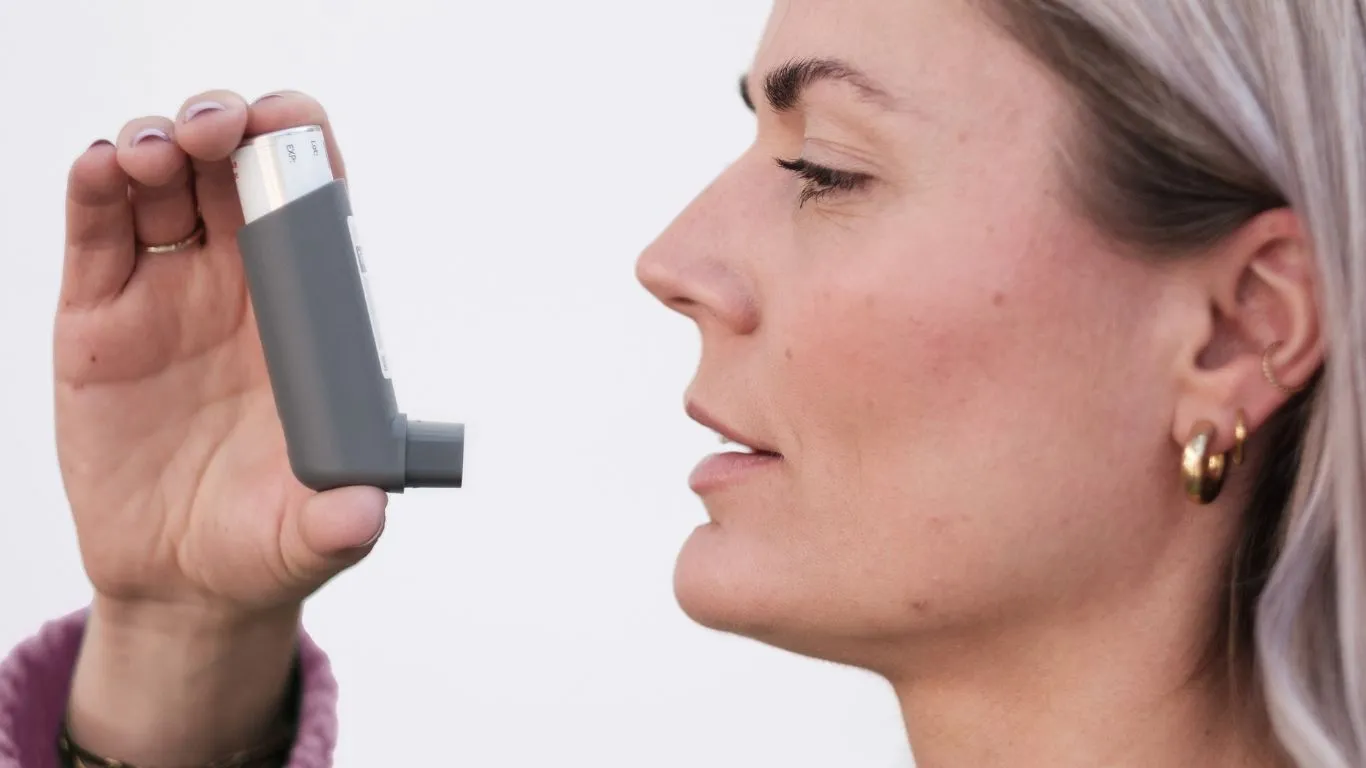Cold Air Asthma Symptoms: Smart Ways to Prevent Dangerous Flare-Ups
When I first started practicing as a pulmonary nurse practitioner, one of the most common questions my patients asked—especially as the seasons started to shift—was this: “Why does my asthma get so much worse in the cold?” If you’ve ever noticed your asthma symptoms triggered by cold air, you’re definitely not alone. In fact, it’s something I see all the time in my clinic, and it can be more than just uncomfortable—it can be downright scary. The good news? Once you understand why cold air does what it does to your lungs, managing your symptoms becomes a whole lot easier. Let’s break it down.
Why Cold Air and Asthma Just Don’t Mix

Breathing in cold air is like sending a shockwave into your airways. It’s dry, it’s irritating, and if you have asthma, your lungs are already a bit sensitive to begin with. That combination creates the perfect storm for bronchospasm—that tightening of your airway muscles that makes it feel like you’re breathing through a coffee straw. Trust me, I’ve had patients describe it exactly like that.
So what exactly happens in your lungs when you step out into a chilly winter morning? Here’s the simplified version:
- Cold air dries out your airways – which causes inflammation and irritation.
- The temperature shock – can cause your muscles to constrict, narrowing your airways further.
- Your body’s natural response – is to produce mucus to protect itself, but that just adds to the blockage.
When I was in grad school, I remember observing a patient with well-controlled asthma who would suddenly spike in symptoms just by walking from her warm car to the hospital entrance. That tiny exposure to frigid air? Boom—coughing, wheezing, chest tightness. That moment stuck with me. Now I always dig deeper into patients’ routines, asking things like, “Do your symptoms hit harder right after stepping outside?” You’d be surprised how often the answer is yes.
Recognizing Cold Air-Triggered Asthma Symptoms

Here’s where things get tricky. Asthma symptoms triggered by cold air can look a lot like your “regular” asthma symptoms—but they tend to come on fast and furious. The problem is, many people don’t realize the cold is the culprit and assume their meds just aren’t working anymore.
Common Signs to Watch Out For
- Shortness of breath – Especially when breathing in cold air through your mouth.
- Chest tightness or discomfort – Like a weight sitting right on your lungs.
- Wheezing – That whistling noise when you exhale, sometimes subtle at first.
- Frequent coughing – Dry, persistent, and often worse at night or early morning.
- Fatigue – Because your body is working overtime just to breathe normally.
Personally, I’ve had patients who thought they were coming down with a chest cold—only to realize it was their asthma reacting to the drop in temperature. It’s not always intuitive, especially if you’ve never associated your environment with your symptoms before.
What Makes Cold Air Such a Powerful Trigger?

If you’re wondering why cold air triggers such a strong response in people with asthma, you’re not alone. The mechanism is a mix of physiology and immune overreaction—kind of like your body treating cold air like a mini-intruder.
Here’s what’s happening under the surface:
- Temperature sensitivity: Your airways aren’t great at warming up cold air fast enough, so the sudden drop irritates them.
- Nerve reflexes: Cold air activates certain nerves that tighten your bronchial muscles.
- Increased inflammation: For folks with asthma, cold air can ramp up your baseline inflammation even more.
- Mucus overproduction: This is your lungs trying to trap and protect against the cold—but it ends up clogging things up instead.
I like to compare it to a house alarm that’s set way too sensitive. A breeze rolls by and the whole system goes off. That’s your lungs on cold air—they overreact to something that most people can breeze through (literally).
And let’s not forget about wind. Windy, cold days make things worse by speeding up the evaporation of moisture in your airways. If you’ve ever coughed uncontrollably just walking into a gusty parking lot, you know what I’m talking about.
Who’s Most at Risk?
Not everyone with asthma has cold-air sensitivity, but some groups are definitely more likely to struggle with it. Based on what I’ve seen in clinical practice, these folks tend to have the toughest time:
- Children and teens – Their airways are smaller and more reactive.
- Older adults – Especially those with other lung conditions or reduced physical activity.
- People with exercise-induced asthma – Cold air plus physical activity is a double whammy.
- Anyone with poorly controlled asthma – If your baseline isn’t stable, cold triggers will hit harder.
I once treated a high school track runner who couldn’t figure out why she could barely finish her winter workouts, even though she was in peak shape. Turns out, she had undiagnosed cold-air induced bronchospasm. Once we got her on a tailored treatment plan and adjusted her pre-run routine, her performance improved dramatically—and so did her confidence.
How to Protect Your Lungs When the Temperature Drops

Let’s talk strategy. Once you know that cold air can trigger asthma symptoms, the next step is figuring out how to stay one step ahead of it. I always tell my patients—managing asthma isn’t just about medication. It’s also about planning, preparing, and making smart choices day to day.
Here’s a trick I share with nearly every wintertime asthma patient: Pre-warm your airways. Yep, just like preheating an oven. I suggest doing a few minutes of indoor breathing exercises or walking around the house before stepping outside, especially if you’re headed somewhere like the gym or work. It signals your lungs that activity is coming and helps minimize the shock when cold air hits.
Simple But Powerful Cold Weather Tips
- Wear a scarf or mask over your nose and mouth – It helps warm and humidify the air before it hits your lungs.
- Breathe through your nose – Your nose naturally warms and filters air much better than your mouth.
- Use your rescue inhaler proactively – For some patients, taking it 15-20 minutes before going outside works wonders. Always follow your provider’s advice on this.
- Check the air quality – Winter air can be dry *and* polluted. That double trouble combo is a big trigger.
- Layer up smartly – Cold exposure anywhere on the body can increase stress responses, which indirectly affect breathing too.
I had a patient who was a delivery driver and couldn’t avoid being outside for long stretches. We adjusted his treatment plan slightly in the colder months and added a humidifier at home. His flare-ups dropped significantly. Sometimes it’s those little adjustments that make the biggest difference.
Medication Adjustments in Cold Months

Cold weather might call for a bit of a medication “tune-up,” depending on how your asthma behaves. This is something I always revisit with my patients around fall, before winter even starts. If you’ve been stable most of the year, but suddenly flare when the temperatures dip, it might be time to tweak your approach.
Things to Discuss with Your Healthcare Provider
- Should you increase your inhaled corticosteroids temporarily?
- Is it time to consider a long-acting bronchodilator?
- Do you need a spacer for better medication delivery in the cold?
- Would a leukotriene modifier help with cold-air reactivity?
From experience, I’ve noticed that patients with mild asthma often try to push through cold-induced symptoms without speaking up. But ignoring those signs can escalate things fast. I always say: don’t wait until you’re gasping for air in a freezing parking lot to think about your meds.
And just to throw in a bit of old-school NP advice—keep an emergency inhaler in your coat pocket, not your bag. Why? In winter, quick access can mean the difference between a mild episode and a full-blown attack.
Asthma and Winter Exercise: Don’t Let Cold Win

Exercise is essential, even in winter. But if you’re someone whose asthma symptoms are triggered by cold air, outdoor workouts can become a struggle. I’ve worked with plenty of runners, walkers, and even winter sports lovers who had to learn to adapt without giving up on fitness entirely.
One of my college-aged patients loved to jog in the early mornings—yes, even in January. But she kept ending up with tight lungs and a cough that lingered for hours afterward. Turns out, she was skipping her inhaler and didn’t realize how much the frigid air was affecting her. Once we mapped out a warm-up routine and pre-treatment plan, she bounced back without needing to sacrifice her routine.
Tips for Working Out in Cold Air with Asthma
- Warm up indoors – Get your lungs moving before you face the chill.
- Wear a breathable mask or balaclava – These help trap moisture and heat as you breathe.
- Shorten your outdoor workouts – Even 20 minutes is beneficial if done safely.
- Shift to indoor alternatives – Treadmills, indoor pools, and gyms can be great substitutes when it’s brutally cold.
Also—timing matters. Cold air tends to be harshest in the early morning and late evening. Try mid-day workouts when the sun’s had a chance to warm things up a bit.
Cold Weather Myths That Can Mislead Asthma Patients
There’s a lot of misinformation out there, especially in online forums or family circles. I’ve had more than a few patients say, “My aunt told me to just tough it out. That’ll build my lung strength.” Yikes. That’s a fast track to an ER visit for some folks.
Let’s clear up a few common myths:
- “If I can’t feel cold air, it’s not affecting me.”
Not true. Even if you’re bundled up and feel warm, your lungs still notice cold, dry air with every breath. - “My asthma’s only bad in winter, so I don’t need year-round meds.”
Seasonal asthma is still asthma. Consistency with meds is key to preventing flares during cold months. - “Using an inhaler before symptoms start is overkill.”
Actually, using a rescue inhaler before exposure is one of the best ways to avoid problems. Think of it as armor, not a fix-it button.
My advice? Always trust your body over myths. If your lungs are trying to tell you something, listen. And if you’re not sure what they’re saying, that’s what we’re here for.
Helping Kids and Teens Manage Cold-Air Triggered Asthma

If you’re a parent, caregiver, or school nurse, winter can be a nerve-wracking time when it comes to managing asthma in kids—especially those prone to flare-ups from cold exposure. I’ve seen firsthand how stressful it can be for families when their child is fine indoors, but every recess or after-school activity brings a new round of coughing and wheezing.
One mom I worked with kept getting calls from her son’s school nurse during cold snaps. She was doing everything right at home—but forgot to send his scarf and inhaler with him to school. Little tweaks like that made all the difference. Within a couple of weeks, those calls stopped.
Winter Asthma Strategies for Children
- Bundle smartly – A loose-knit scarf over the nose and mouth warms the air without making kids feel too “covered up.”
- Teach the signs – Kids should know how to describe their symptoms. I tell them to think of it as their “body’s way of waving a red flag.”
- School meds access – Make sure the nurse has up-to-date inhalers and action plans, and communicate about cold-weather triggers specifically.
- Morning med routines – Sometimes using a controller or rescue inhaler right before leaving home can prevent symptoms before they start.
I always say—children are great at adapting once they understand the “why.” Talk to them like mini experts. In my experience, they love to learn about how their lungs work and how to stay in control.
When It’s More Than Just Cold Air

Now, while cold air is a big trigger, it’s not always the only one. Winter comes with a whole bundle of other culprits—dry indoor heat, viral infections, pet dander (more time indoors), and even mold in places you wouldn’t expect. So if your symptoms aren’t adding up, it might be more than just the chill.
I had a patient whose asthma flared every winter, and we assumed it was the cold. But after doing a little investigating (and a few air quality tests), it turned out her humidifier was overworking and causing mold to grow behind her dresser. Once we fixed that issue, her symptoms drastically reduced—even on the coldest days.
Watch for These Additional Winter Triggers
- Dry indoor air – Heaters pull moisture from the air, making it harder for your lungs to stay comfortable.
- Respiratory viruses – Flu, RSV, and cold viruses are major asthma aggravators. Prioritize hygiene and vaccines.
- Dust mites and pet dander – With windows closed, allergens concentrate indoors.
- Scented candles and air fresheners – These release chemicals that can irritate sensitive lungs.
If you’re not sure what’s setting you off, consider keeping a symptom journal for a couple of weeks. Jot down the time of day, environment, and activity when symptoms start. That info can be gold during your next appointment.
When to Call Your Provider (And What to Say)
This might be one of the most underrated parts of asthma management: knowing when to reach out and what to actually say. I’ve seen patients hesitate to call because they “don’t want to bother” their provider. But catching a worsening pattern early can literally prevent a trip to the ER.
If your symptoms start creeping in more often—especially after exposure to cold air—or your meds don’t seem to work like they used to, don’t wait. Here’s what you can prepare before calling or visiting your provider:
- Track your symptoms – Include what triggered them and how long they lasted.
- Note any med changes – Did you miss doses, or did something new start recently?
- Rate symptom severity – Mild discomfort, or full-on wheezing that wakes you up?
- Be honest about your routines – If you’ve skipped meds or haven’t been using a spacer, say it. We’re not here to judge—we’re here to help.
One of the most helpful things patients can say to me is, “This is what I’m doing now, and this is what’s changed.” From there, we can pivot, adjust, or even run further tests if needed.
Stay Ahead of the Cold: Final Thoughts
Asthma and winter may never be best friends—but with the right strategies, tools, and a little bit of planning, they don’t have to be enemies either. As someone who’s worked closely with patients through countless cold seasons, I can tell you this: you have more control than you think. And sometimes all it takes is a scarf, an inhaler, and a fresh understanding of your body’s signals.
Remember, managing asthma symptoms triggered by cold air isn’t just about avoiding the cold—it’s about knowing your body, staying prepared, and keeping open communication with your care team. Winter doesn’t have to be a season of fear when you’ve got a solid plan in place.
References
- National Heart, Lung, and Blood Institute
- Centers for Disease Control and Prevention
- Health.com
- National Institutes of Health
Disclaimer
This article is for informational purposes only and should not be used as a substitute for professional medical advice, diagnosis, or treatment. Always consult with your healthcare provider regarding any medical concerns or before making changes to your asthma treatment plan.

Bianca Nala is a compassionate Nurse Practitioner with a strong background in primary and respiratory care. As a health writer for Healthusias.com, she combines her clinical expertise with a talent for clear, relatable storytelling to help readers better understand their health. Bianca focuses on topics like asthma, COPD, chronic cough, and overall lung health, aiming to simplify complex medical topics without losing accuracy. Whether she’s treating patients or writing articles, Bianca is driven by a single goal: making quality healthcare knowledge accessible to everyone.





